9 Ways to Be Water-Wise in the Edible Garden
http://decor-ideas.org 07/05/2015 00:13 Decor Ideas
Is there anything that feels more like summer than fresh fruit and vegetables from the garden? But with water consciousness on many people’s minds, particularly in California and other parts of the West, it may seem irresponsible to keep up with the summer tradition. But you don’t have to eliminate edibles altogether — just be as water-efficient as you can. Four designers who are dealing with drought share their best tips on how to grow edibles with a little less water.
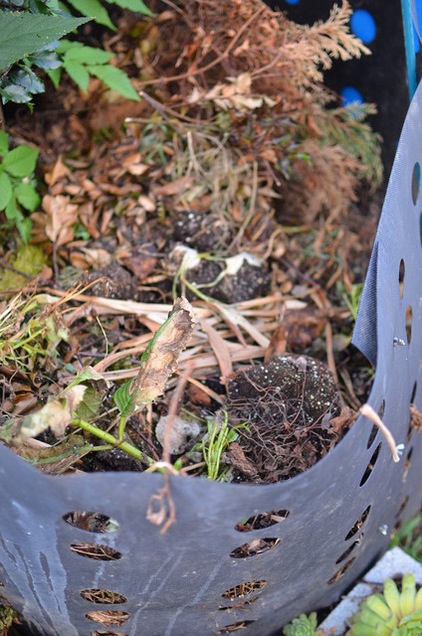
1. Get your soil healthy. “You need really good soil,” says Nevada landscape architect Jana Vanderhaar. That usually means adding compost. Vanderhaar adds compost every time she plants, about an inch or so every season, and she also adds organic fertilizer to the plant holes.
Not only does the organic matter enrich the soil to help nutrient-intensive edibles thrive, it also helps the soil hold water better so you can water less frequently. “Healthy living soil acts as a sponge, holding seven times its weight in water,” says Los Angeles landscape designer Jacky Surber.
Tip: San Francisco Bay Area garden designer Patricia Larenas lines her raised beds with newspaper before she adds soil to reduce how much the wood dries the soil out. The paper helps hold the water in longer, and as it breaks down it adds carbon to the soil. She replaces the paper annually.
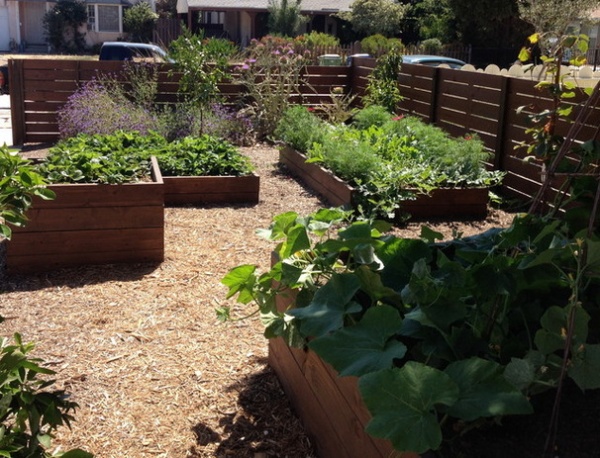
2. Prevent evaporation at the surface. It’s important to reduce evaporation that occurs on the ground’s surface by covering exposed soil. Mulching is a common way to do this. Larenas experimented with straw this past year, and Vanderhaar suggests leaves or even partially decomposed compost. Though you’ll probably want to mulch about once a year, Vanderhaar says you should add mulch any time you see bare soil.
Planted ground covers can also shade the soil and prevent evaporation immediately after watering. Vanderhaar recommends annual ground cover companion plants like clover, thyme, calendula and borage. These plants also attract beneficial insects. Dill, fennel and cilantro are other options, and they’re also edible. San Jose landscape designer Kim Leichner also likes strawberries, especially the California native Fragaria chiloensis, as a ground cover. Hers grow in full sun and full shade but are sometimes eaten by dogs and snails.
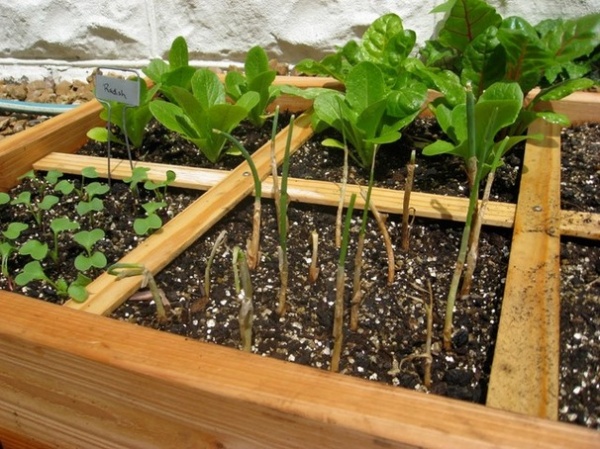
3. Don’t be afraid to plant close together. Biointensive gardening and square-foot gardening are great ways to make sure you’re making the best use of your space. Leichner grew up with a backyard-sized edible garden arranged in tidy, well-spaced rows. “As an adult I have thrown that out the window,” she says. “I use all the soil space I can. I know that is counter to what is preached, but I don’t experience issues from pests and disease that would be expected from tight corners.” This works well for annuals since they don’t have too much time to get diseased.
She relies on companion planting to help keep pests away — garlic cloves and dill around tomatoes keep whiteflies and other pests at bay. Nasturtium helps cover soil and also attracts pollinators and is itself edible. Leichner says it attracts aphids too. Yarrow is another secret weapon. Pollinators, ladybugs and lacewings will also beat the bad bugs.
Grow a Kitchen Garden in 16 Square Feet
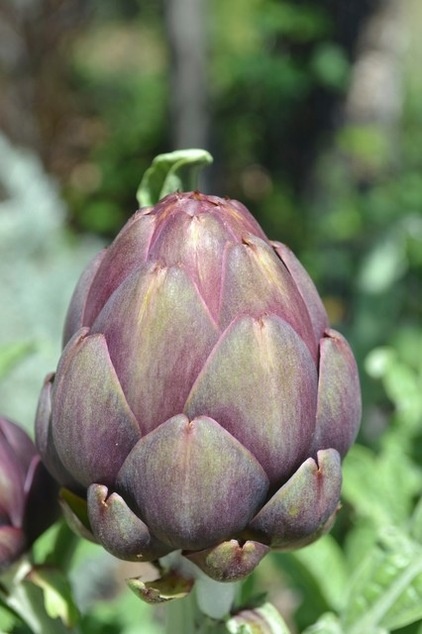
4. Buy local. Some seed companies sell seeds they have cultivated to be more drought-tolerant. “Baker Creek Heirloom Seeds sells unique varieties of melons, squash, corn, beans and other vegetables, herbs and flowers that are drought-tolerant and delicious,” Surber says.
Local farmers often save the seeds of specific plants that have done well in the area’s climate, and that usually means surviving with less maintenance. For Vanderhaar that means plants adapted to high altitude, cold snaps, high wind and alkaline soil, while for other gardeners the local plant adaptations will be different.
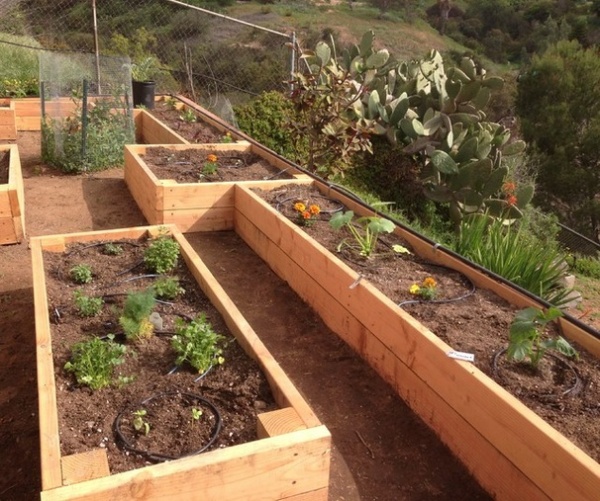
5. Get your watering right. Drip irrigation reduces water use in all gardens, and edibles especially benefit from the routine watering of drip. (We’ve learned that improper watering is a top reason why container-grown edibles tend to fail). Spray irrigation loses water to evaporation, and it can be difficult to be consistent with hand watering. “With drip irrigation on a controller there is no remembering, and the seeds, seedlings or new plants have a chance to get started,” Leichner says.
Leichner waters her seedlings once a day for two minutes. As the plants get larger and develop deeper roots, she’ll water longer in order to reach the roots, paying close attention that the water isn’t dripping out the bottom. Surber recommends exploring smart irrigation — some systems tap into real-time weather info that can help save on watering.
Edible watering tips worth soaking up
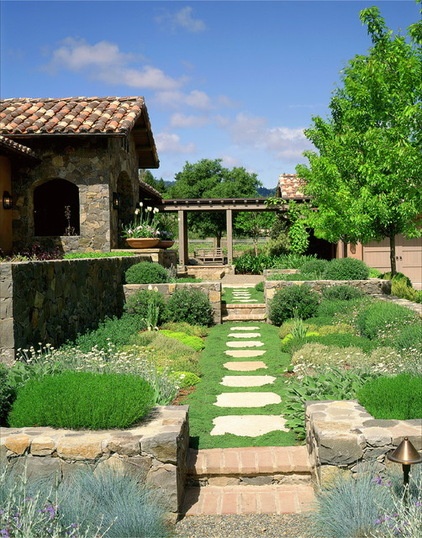
6. Plant Mediterranean herbs or other drought-tolerant edibles. “Civilizations have used herbs, and many of the same ones, for thousands of years, and it’s for a good reason,” Larenas says. They bring pollinators, they’re there when you need them as a food source, and they’re good for companion planting and bringing in beneficial bugs. “When I started integrating herbs into the garden, organic gardening was pretty easy.”
Most herbs are perennials and require very little water once established. Rosemary, lavender, oregano, chives, garden sage, thyme, echinacea and mint (if you keep it in a pot) are especially drought-tolerant, and some are even on local low-water plant lists for water-reduction rebates.
See the recipe for Mediterranean edible garden style
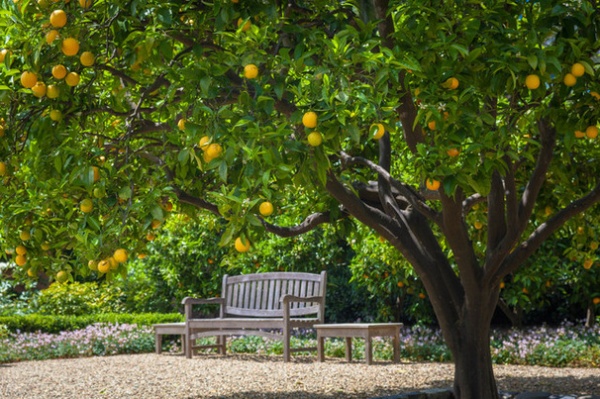
7. Use greywater or recycled water where you can. Greywater is a wonderful resource for watering landscapes, and it’s becoming recognized by local water districts as a viable source. Gently used water from sinks, showers and laundry machines can be piped out to the landscape and used to water many of your garden’s plants, including fruiting trees and shrubs.
Laundry-to-landscape systems are the most common and simplest greywater systems to install. Consider that every time you wash a load of clothes or take a shower, you could also be watering your fig, pomegranate, loquat or citrus tree. Fruit trees take substantial water to establish but are more drought-tolerant once mature.
Depending on where you live, you might be able to capture water from downspouts in rain barrels; some cities offer rebates or free barrels.
Learn more about watering with greywater
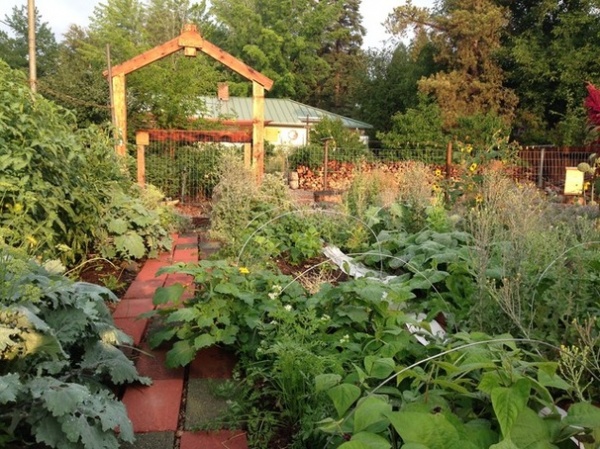
8. Plant in the right place at the right time. Eight hours of sunlight, preferably with afternoon shade, is ideal for most edibles. Though they will grow in areas with more sun, they’ll require more water. Less than six hours of sunlight becomes more of a challenge.
Larenas advocates planting cool- or warm-season edibles in the correct season, regardless of whether you can grow them year-round. Use microclimates to your advantage: Plant a heat-loving tomato against a south-facing wall but do so early in the season to establish a healthy root system, before it gets too hot and you have to water as much.
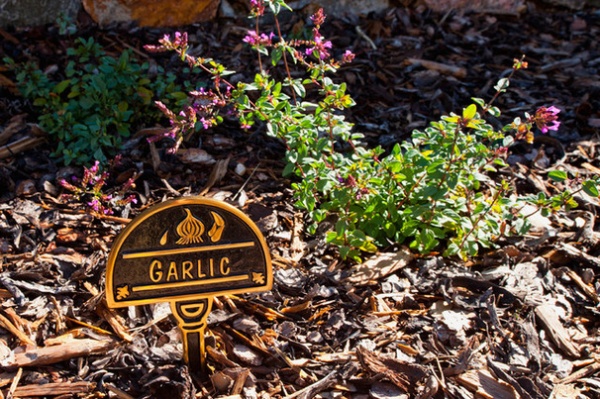
9. Be an active gardener. Drip irrigation on automatic timers will make your watering more consistent, and you can plant edibles that require less water than others, but nothing replaces a conscientious eye. “Make sure you are paying attention,” Larenas says. Check your plants every day to see how they’re doing. Water needs vary as plants mature and seasons change. If everything is set on automatic, you might miss those subtleties.
Your turn: How do you save water in the edible garden? Tell us in the Comments.
More:
Edible Gardening Essentials: Watering Tips Worth Soaking Up
See more ways to add edibles to your yard
Related Articles Recommended












